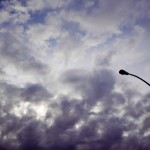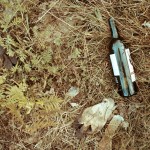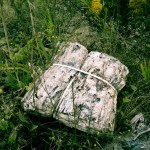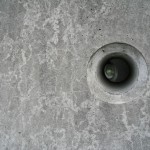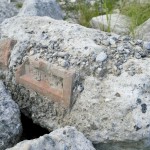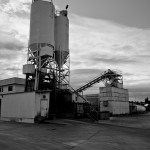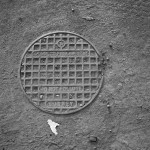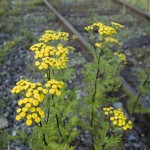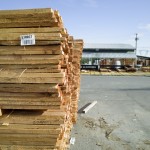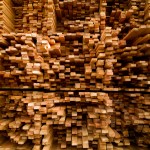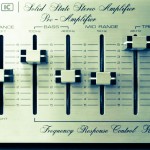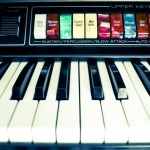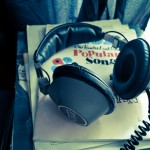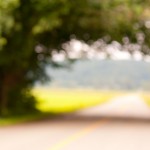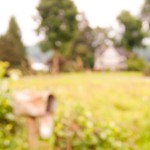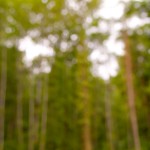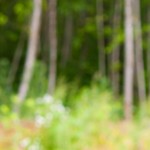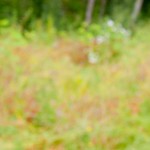Aug
14
2011

In honour of Ricoh purchasing the digital imaging business of Pentax from Hoya I present the Ricoh Auto Shot. 1960’s design, function and results, the later ensured by using a poor quality cheap film. The defining features of this camera are it’s two shutter speeds (1/30) of a second in manual mode and 1/125 in auto and that the film advance is accomplished by a clockwork spring. Unfortunately my spring is mostly noun and not so much verb, resulting in a single exposure for every wind instead of the much cooler 6 when it was new. The exposure adjustment is controlled by a selenium cell surrounding the 35mm f2.8 lens. The aperture blades come together to produce what I like to call batkeh, odd bat shaped highlights at some apertures.

It’s a small camera as you can see here when compared to a quarter. The shutter release is actually OK being in the front as your index finger naturally falls on top of it when you hold the camera up with both hands, there being no other way really to hold it and trip the shutter. The fastest setting is for ASA200 film which makes the 10 possible selections between 12 and 100ASA amusing. It’s a fun little camera and if I ever find myself time traveling to 1964 I will be sure to take it along.

no comments | tags: camera, film, Ricoh | posted in Cameras, Photography
Aug
10
2011
The Pentax DA series of lenses are designed with an image circle that covers the APSC sized digital sensor. They are not intended to be used on a 35mm film camera, as they create large amounts of vignetting. That almost sounds like a challenge to me. I mounted my DA 12-24 on a PZ1p loaded with Kodak Ektar and experimented. It is immediately apparent that the wide end between 12 and 18 millimeters is out as the lens just doesn’t come close to covering the film frame. You can see this immediately in the viewfinder. However between 18 and 24mm and with the lens adequately stopped down to about f11 you can actually use this lens as an ultra wide zoom on film. Converting the image size factor around from 35mm to APSC means the 18mm on 35mm film is about equivalent to 12mm on APSC.


Here you can see what happens if you don’t stop down enough, although I think this shot was taken with the DA 35mm ltd with the lens hood deployed.

no comments | tags: DA, film, Pentax | posted in Cameras, Photography
Aug
6
2011
I’ve chosen to concentrate on this image because it demonstrated all that the camera can do. Once scanned the file is around 5200×5200 pixels or something equivalent to a 25 Mega pixel camera file.

Here is a 100% crop from the above image.

And here you can see that when the lens is shot wide open there is a considerable amount of vignetting.

I will have to use this camera again to get a better sense of it’s abilities but it was such a pleasure to use that I’m really looking forward to it.
1 comment | tags: Autorol, film, Nishida, Wester | posted in Cameras, Photography
Aug
5
2011

Of all my cameras this may be the most obscure. While it is a conventional medium format folder the company that produced it seems less so (Nishida). They apparently existed between about 1936 and 1958, producing some cameras in their later years under the Wester name. What information there is about this camera online is mostly in Japanese. It’s a well built camera with many nice details. It uses 120 roll film and doesn’t have a window on the back to view frame numbers but actually has a proper frame advance mechanism. Each new frame can be brought forward after pressing the release lever on the back beside the viewfinder. It has a 75mm F3.5 lens to cover the 6cm square negative it produces. Wide open there is strong vignetting that doesn’t entirely go away with stopping down. I actually consider this a good thing as it gives the images a particular look without any manipulation, if I didn’t want this I could be just shooting digital. The shutter goes from 1 second to 1/300 second. The nicest feature though is the coupled rangefinder which really separates this camera from the rest of the folders that I have come across. It’s as easy to use as a 35mm rangefinder but of course the resulting negative is much larger with excellent detail. One difficulty with cameras like this though is getting a perfectly sharp exposure while hand holding, they are inherently hard to hold steady.

3 comments | tags: 120, Autotol, film, Nishida, NKK, Six, Wester | posted in Cameras
Aug
3
2011
While I had access to the Sigma Dp1s I set up a quick comparison with my current digital cameras. The Nikon P7000 and the Pentax K-7. The image bellow is 100% crops from the same area. You can see that the DP1s produces a very clean detailed file but there is just no getting around the fact that it is much lower resolution. As for the K-7 image I shot the DA12-24 at 16mm to make it roughly equivalent in focal length. I do have better performing lenses but I thought I would make it as fair as possible.

Here I’ve upscaled the DP1s file to the same size as the K-7 image using photoshop to make a more directcomparison. So in my estimation the image resolution sits somewhere between the point and shoot P7000 and the DSLR K-7. The fixed 28mm equivelent F4.0 lens really is quite limiting but if that is what you want in a point and shoot this camera will work.

I’ve read that the Dp1s makes a good landscape camera,

but I find it hard to see, unless your printing at a relatively small size. The images that I did have printed seem to suggest a maximum printing size of around 11×14. In the end I’m not so interested in whether Foveon is a better technology than Bayer filter sensors. It is a camera that does one thing at one focal length, and that’s OK, but the market has moved on with camera’s like the Fuji x100 while Sigma has made minor updates to the same products. As the DP series of cameras exists today it’s hard to make a valid case for purchasing one paritcularly with their high asking price.
2 comments | tags: Digital, Dp1s, Photography, Sigma | posted in Cameras, Photography
Jul
31
2011
A friend offered to lend me his Sigma Dp1s so that I might sip from the sweet Foveon Kool Aid. OK those weren’t his words or likely his intent, thanks Duncan. Let me be clear though this camera has some major shortcomings that can’t be ignored. It’s slow, the sort of slow where I could load a roll of film faster than it can write a file to a card. The rear LCD appears to exist to show your settings and to confirm that yes you did capture something. The metering also did some serious highlight clipping even when I had -1 exposure compensation, of course I had no way of knowing this until I got the files into my computer (see previous sentence). For all other complaints please refer to the rest of the Internet. Now for the positive side and where the argument for the purpose of this camera begins. It produces nice sharp noise free files with accurate colours. It has a 16mm f4.0 lens on an APSC sized sensor which is unique and while on the slow side it performs very well. The close focus distance is quite long at 30cm so that does limit some of the creative possibilities. I guess for me the unanswered question now is how large an image can be rendered from these files. As is well documented the sensor captures 3 colours at different layers but the file dimensions are 2640×1760 however you slice it. Aside from the issues of speed I actually like the simplicity of the camera and it’s compactness. I was able to configure the otherwise useless (wide/tele) buttons to control ISO, why does a camera with a fixed focal length have these controls? This arrangement ends up in practice being the best of any camera I have ever used, wide decreases ISO, tele increases ISO, simple and immediate making ISO the third variable much like my DSLR. I easily moved between ISO 50 to 400 and even found ISO 800 to be largely noise free. So while I will reserve any final verdict until I have seen an image printed, it appears that the only thing standing in this cameras way from being a good photographic tool is it’s glacial speed, and exposure system. Whether these issues are adequately addressed with the latest version the Dp1x I can’t say but any improvement in speed would be welcome.
10 comments | tags: Cameras, Digital, Dp1s, Sigma | posted in Cameras, Photography
Jul
27
2011
Well it’s back to the drawing board. My “lets see what we get and go from there” attitude didn’t pay off with much of a result to start. There was just too much light leaking in. So it’s going to require a major redesign with some baffles and better sealing around the lens board. Some other modifications I’ll make is better tension of the film and a better film mask so that I can get more exposures from a single roll.

Here is the result and if you consider this is the best that I was able to get, by far, you can see that I need to do a lot more work.

Here is the original post when optimism was high. Lego Camera
1 comment | tags: camera, film, Lego | posted in Cameras, Photography, Uncategorized
Jul
26
2011
Here are some more intentional out of focus paintings, oops I mean photographs.
2 comments | tags: DSC-V3, focus, Photography | posted in Cameras, Photography, Processing
Jul
24
2011

It’s a bit of a thorny issue, talking about the P7000’s focus which causes moments of wonderment, such as why didn’t it focus on the object in front of it or why does it focus only after a second press of the shutter button. Most of the time it is great and I don’t expect perfection but I do like consistency. One area that I couldn’t find any info about was the minimum focus distance for different equivalent focal lengths. I suspect the value given in the spec. sheet is just for the widest lens setting. So I did some testing and these are my results with a high contrast target and measuring to the front of the camera body.
28mm……1 3/4″ , 35mm……2 1/2″ , 50mm……6 3/4″ , 85mm……..13 1/4″ , 105mm……15″ , 135mm…….15 3/4″ , 200mm……16 3/4″
Yes it looks odd to me as well to have the focal lengths in metric and the distance in imperial but that was the tape measure I had on hand.
no comments | tags: Cameras, Nikon, p7000, Photography | posted in Cameras, Photography
Jul
17
2011
I’ve been thinking about this for years but I finally took the time to build a medium format LEGO camera. What made the effort all the more desirable was that I was recently given the perfect lens for the project, A Schneider Kreuznach Angulon 65 f6.8. It’s hard to say how wide this will end up being but the negative is about 9 Lego bricks wide so it should be about the equivalent of a 28mm on a 35mm film camera. Lego is not inherently light tight, every seam is a light leak, so I used some black paper inside to keep that down. The lens board was held in place by some light sealing material, otherwise known as tape, and elastics. This provided for a “very accurate” focus mechanism provided you have your eyes closed. There actually was no focus I had previously ground a small piece of glass and used it to roughly determine that the lens board should be about 67mm from the film for infinity focus. If your getting the sense that I’m not really sure of the results then your right. I will send the film off and wait a week just to find out if it worked and how badly the light leaked. I hope I’m pleasantly surprised but if I keep my expectations low then it will be easier to exceed them.

3 comments | tags: camera, film, Lego | posted in Cameras, Photography














